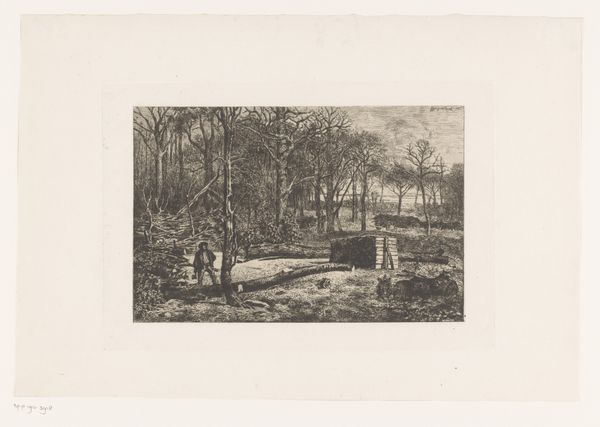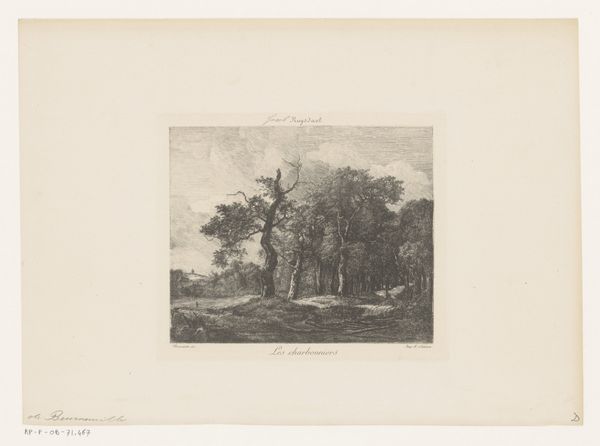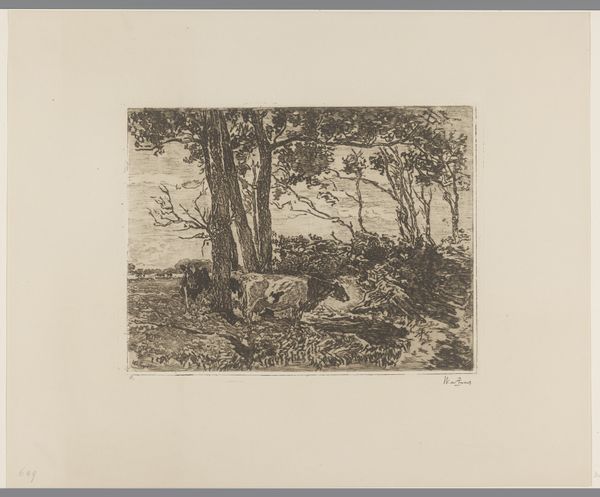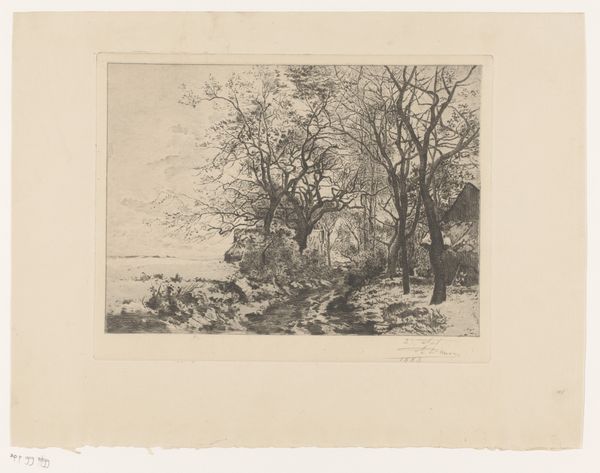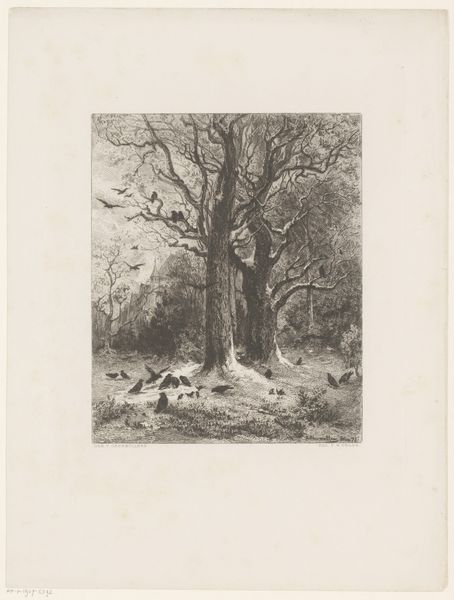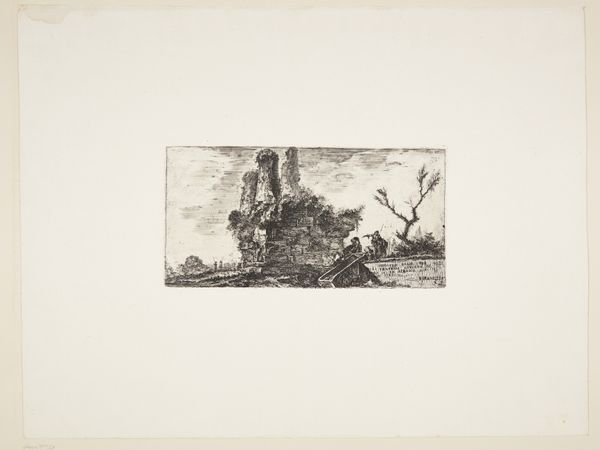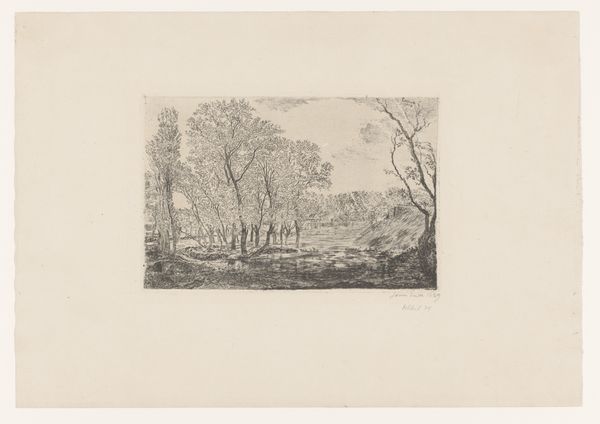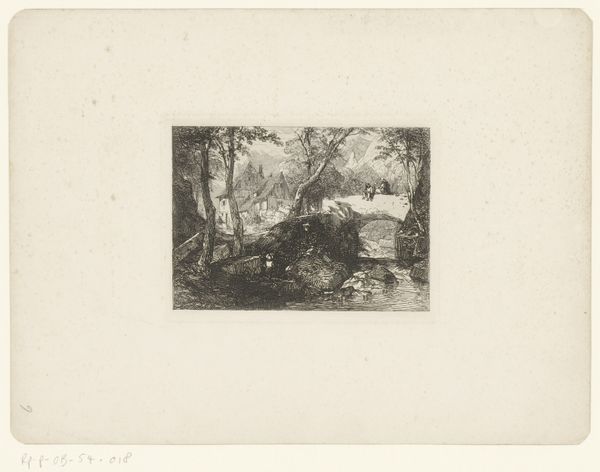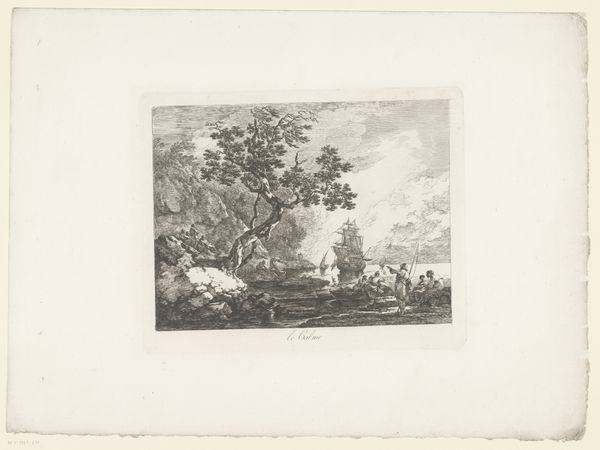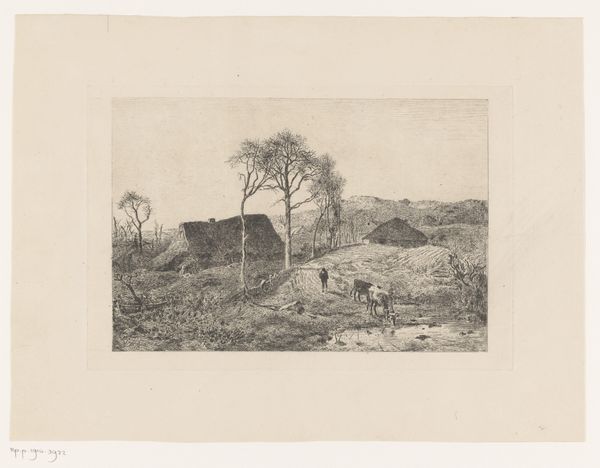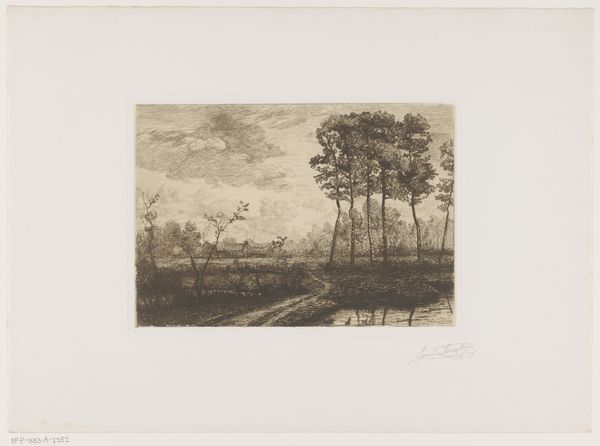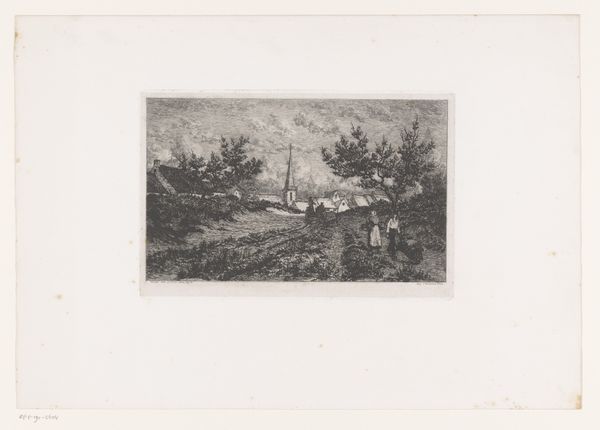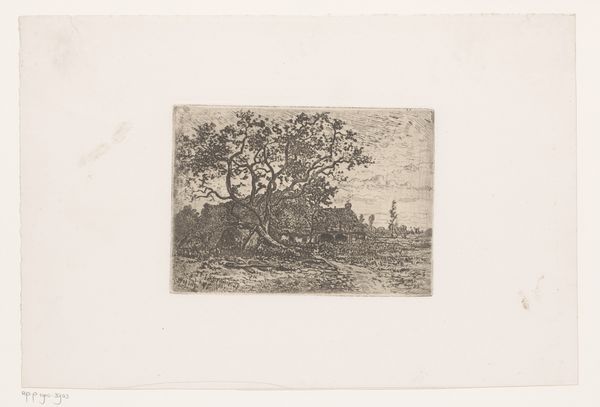
drawing, print, paper, pencil, engraving
#
drawing
# print
#
landscape
#
paper
#
pencil
#
engraving
#
watercolor
#
realism
Dimensions: 234 mm (height) x 261 mm (width) (plademaal)
Editor: This is "Autumn. Deer Fighting," a pencil and engraving print by Thorvald Niss, likely created between 1842 and 1905. It’s striking how he captured the energy of the deer battling in such a muted palette. How do you interpret this work? Curator: I see a commentary on masculinity and the cyclical nature of power, viewed through the lens of nature. Consider the period: late 19th century. Ideas about the natural world were often used to justify social hierarchies. This print, while seemingly a simple depiction of battling deer, can be read as a reflection on competition and dominance, ideas that permeated societal structures at the time. Do you see any connection between this depiction and, say, prevailing social Darwinist thought? Editor: That’s an interesting point! I hadn’t considered the social Darwinist context. I was mainly focused on the artistic execution. Curator: Exactly, and that's crucial, too. Niss uses realism, but it is not neutral. The intense focus on the deer, locked in combat, directs our gaze. It almost feels like a stage, where the struggle for power plays out according to some ancient script. It's about more than just two deer; it becomes symbolic of broader struggles. The surrounding landscape adds to that by creating both atmosphere and depth. How do you think the realism used shapes the viewing experience and our perception of that symbolic intent? Editor: The realism makes it believable, almost scientific, giving weight to the comparison you’re drawing to social structures. Curator: Precisely! What seems at first like a straightforward wildlife scene invites contemplation about the justification of hierarchies and the implications of ceaseless battles for dominance both within society and in nature. Editor: This has completely changed how I see the work. I now see it as Niss making some really interesting commentary on social norms through nature. Curator: Indeed, it underscores that art is never truly separate from the social and intellectual currents of its time. Analyzing these undercurrents enables us to grasp the true magnitude of this seemingly simple engraving.
Comments
No comments
Be the first to comment and join the conversation on the ultimate creative platform.
